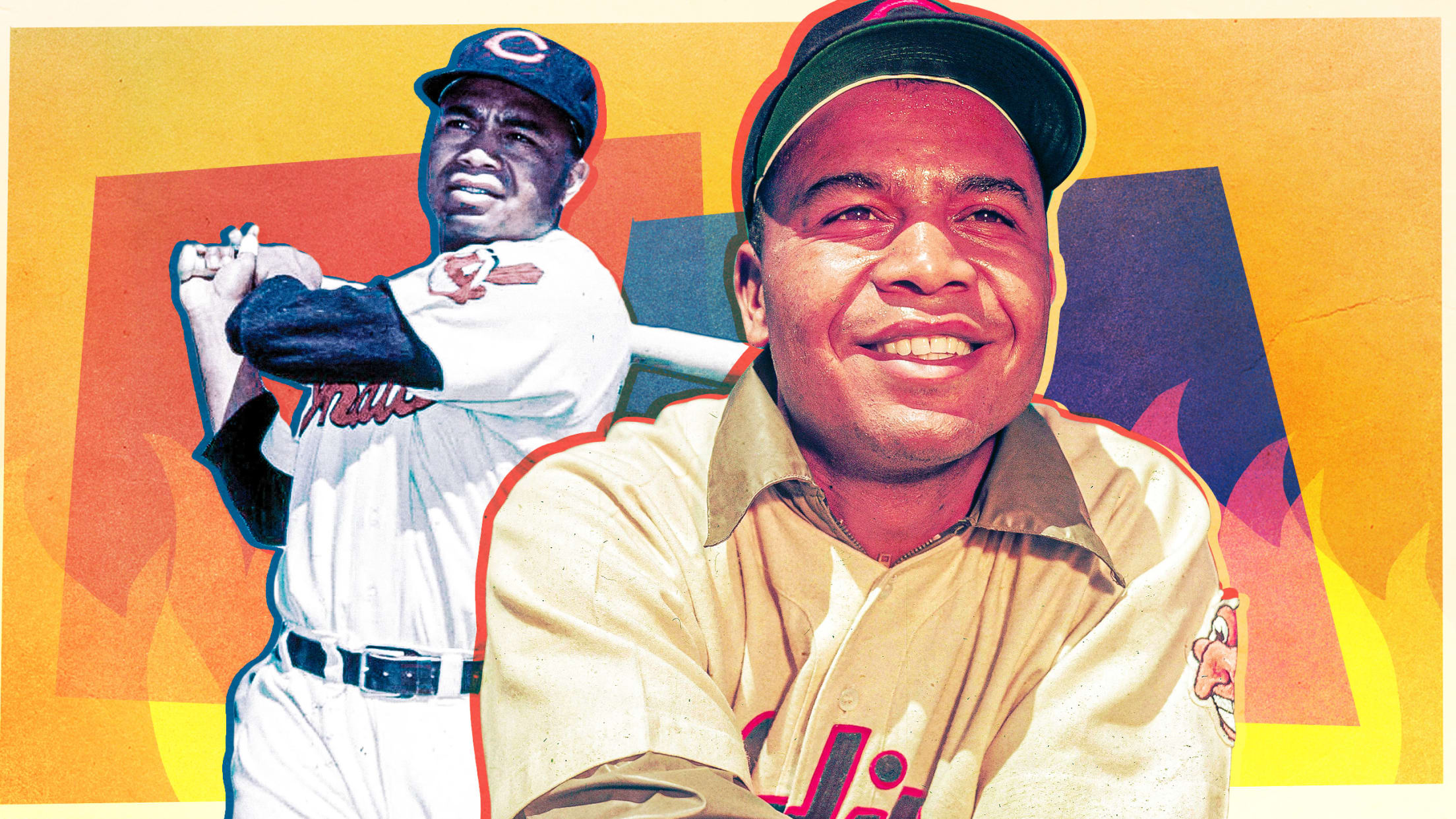
The crack-of-dawn call to Larry Doby that changed baseball
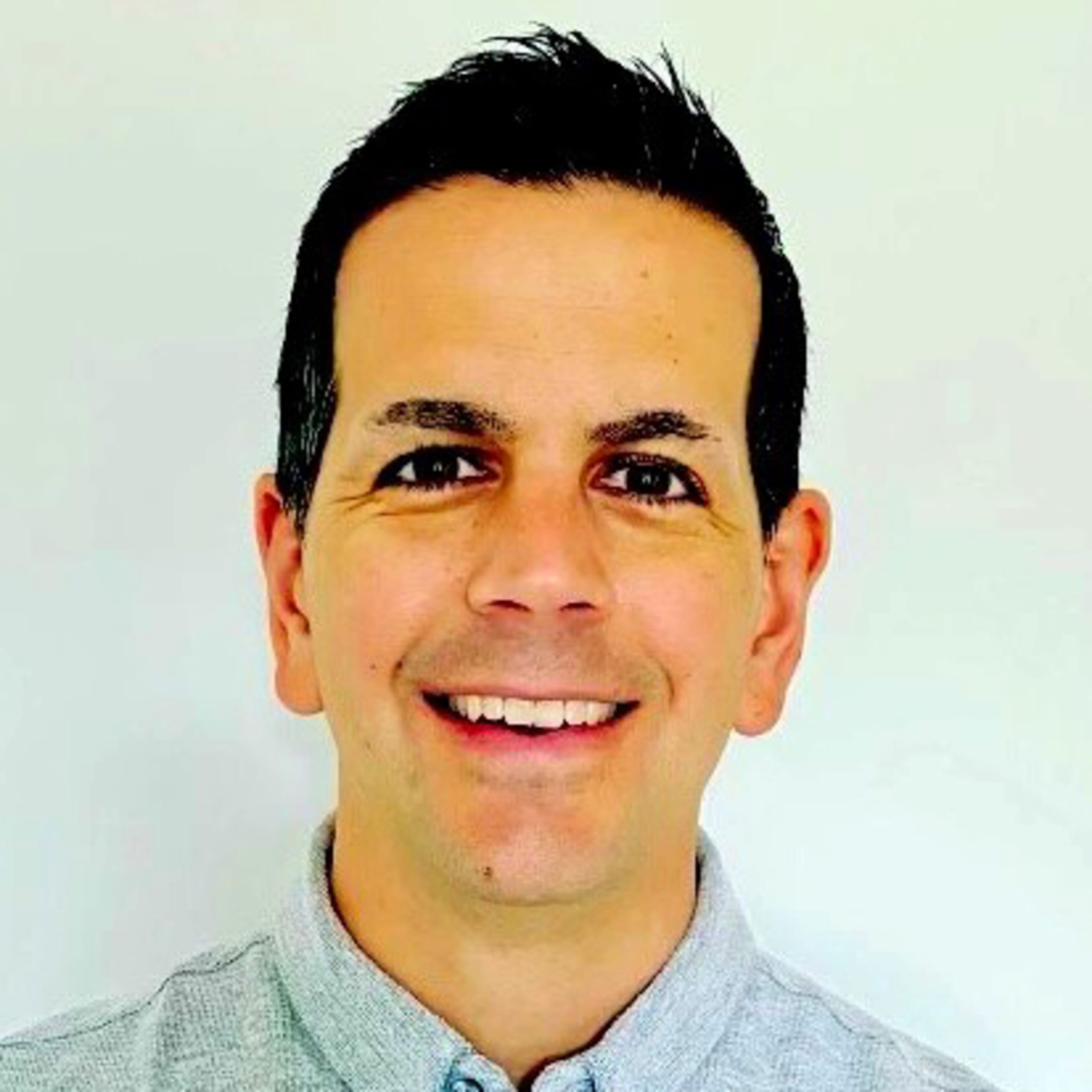
Larry Doby got what shut-eye he could as the bus carrying him and his Negro League teammates made its trek from Wilmington, Del., to Newark, N.J., in the early morning hours of Thursday, July 3, 1947.
As Doby slept that night 75 years ago, he did not know about the newspaper report bearing his name. Did not know that his home would, in a matter of hours, be swarmed by inquiring reporters. Did not know that his life -- and the entire structure of professional baseball -- was about to be enduringly altered.
By the time Doby had disembarked the bus, driven his Ford convertible to his apartment in Paterson, N.J., and gotten into bed for a more proper rest, it was roughly 5:30 a.m. And it was just before 7 a.m. when Newark Eagles owner Effa Manley rang Doby’s phone and cut short his sleep with the big news.
“Larry,” she said, “you have been bought by the Cleveland Indians of the American League and you are to join the team in Chicago on Sunday.”
While Jackie Robinson’s color-barrier-breaking debut with the Brooklyn Dodgers 11 weeks earlier was a cultural touchstone and a vital precursor to the American civil rights movement, it is important to consider what the purchase of Doby’s contract meant not just for the now-integrated AL, but for baseball’s framework.
Robinson, after all, had signed his contract with the Dodgers in October 1945, and spent the entire 1946 season in the Minor Leagues with the Dodgers’ Triple-A affiliate in Montreal. He was promoted to the Majors six days before the start of the 1947 season, unofficially debuting in an exhibition game at Ebbets Field four days before the real thing.
Doby, on the other hand, arrived to the AL literally overnight, on a Pennsylvania Railroad train, to make his debut -- 75 years ago today -- on July 5, 1947, against the White Sox.
So, something more definitive was communicated by Doby coming to Cleveland. If Jackie was baseball’s experiment with integration, or the sowing of a seed, Doby was proof that the seed had taken root. There could be no denying now about what was happening and what would happen. The death knell had been sounded -- bittersweetly -- for the Negro Leagues, with the best Black players plucked and rostered and finally able to display their talents on baseball’s biggest stage.
“The entrance of Negroes into the Majors is not only inevitable,” Cleveland owner Bill Veeck told a reporter when the Doby signing became official, “it is here.”
The desegregated Major Leagues, which should have been in existence all along, was finally going to happen.
And in Larry Doby’s case, it was going to happen fast.
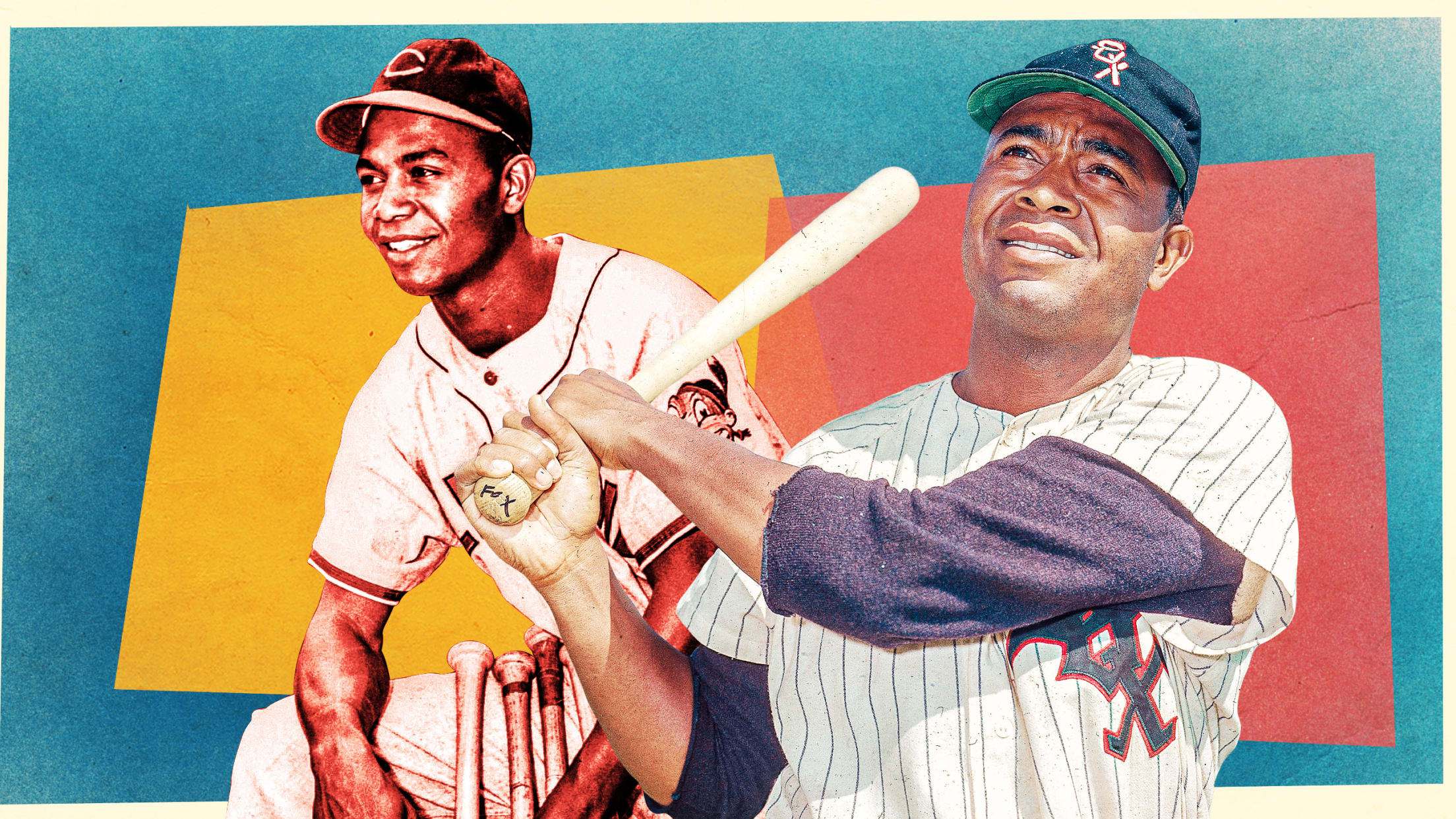
****
It was a big change to go from the Newark Eagles to the Cleveland Indians. But the feeling was not unfamiliar for a man who had grown up in a state of near-constant movement and upheaval.
Lawrence Eugene Doby was born on Dec. 13, 1923, in Camden, S.C., the son of a stable hand. His father, David Doby, fed and cared for the saddle horses of wealthy families, spending his summers in Saratoga, N.Y., and his winters in Camden. It was good work, but the frequent travel strained David’s marriage with Larry’s mother, Etta, who wound up moving solo to Paterson to work as a maid.
That left Larry, whose nickname within the family was “Bubba,” primarily under the care of Etta’s widowed mother, Augusta Brooks. She fed him, raised him and introduced him to religion.
“She made me go to church with her all the time,” Doby told biographer Joseph Thomas Moore. “I liked what I heard in the Twenty-Third Psalm [‘The Lord is my shepherd: I shall not want’] and the Ten Commandments. Somehow I got the feeling that the church helped Black people to be themselves. I liked that feeling.”
Augusta was so important in Doby’s life that he did not even go by the last name Doby. In those early years, he went by the name Bubba Brooks.
I had been alone most of my life. I had gotten accustomed to that. Not that I wanted to be alone. You learn to live with being alone.
Larry Doby
Young Bubba’s world was turned upside down in the summer of 1934, when he was just 10 years old. His grandmother was hospitalized with dementia, forcing the child to move in with an aunt and uncle. That same summer, David Doby drowned after falling off a fishing boat on Lake Mohansic in New York. He was just 38 years old.
For the first four years after his father’s death, Lawrence Doby -- as he was now referred to, having embraced his real first and last name -- lived with his Aunt Alice and Uncle James and their five children. But when Doby finished eighth grade, his mother had him move to New Jersey, where he would attend Eastside High School in Paterson’s integrated school system.
His mother’s schedule, which included just one “maid’s day off” per week, further added to the challenges of Doby’s unusual upbringing. Rather than actually live with his mom, Doby bounced from house to house, staying with Etta’s friends.
“I had been alone most of my life,” Doby told Moore. “I had gotten accustomed to that. Not that I wanted to be alone. You learn to live with being alone.”
Doby was introspective and independent. He was quiet and brooding, with a healthy amount of righteous anger always bubbling beneath the surface. It was a product of those strange circumstances he had endured growing up.
Yet those circumstances and that personality would serve Doby well when his athletic talent put him in position to make baseball history.
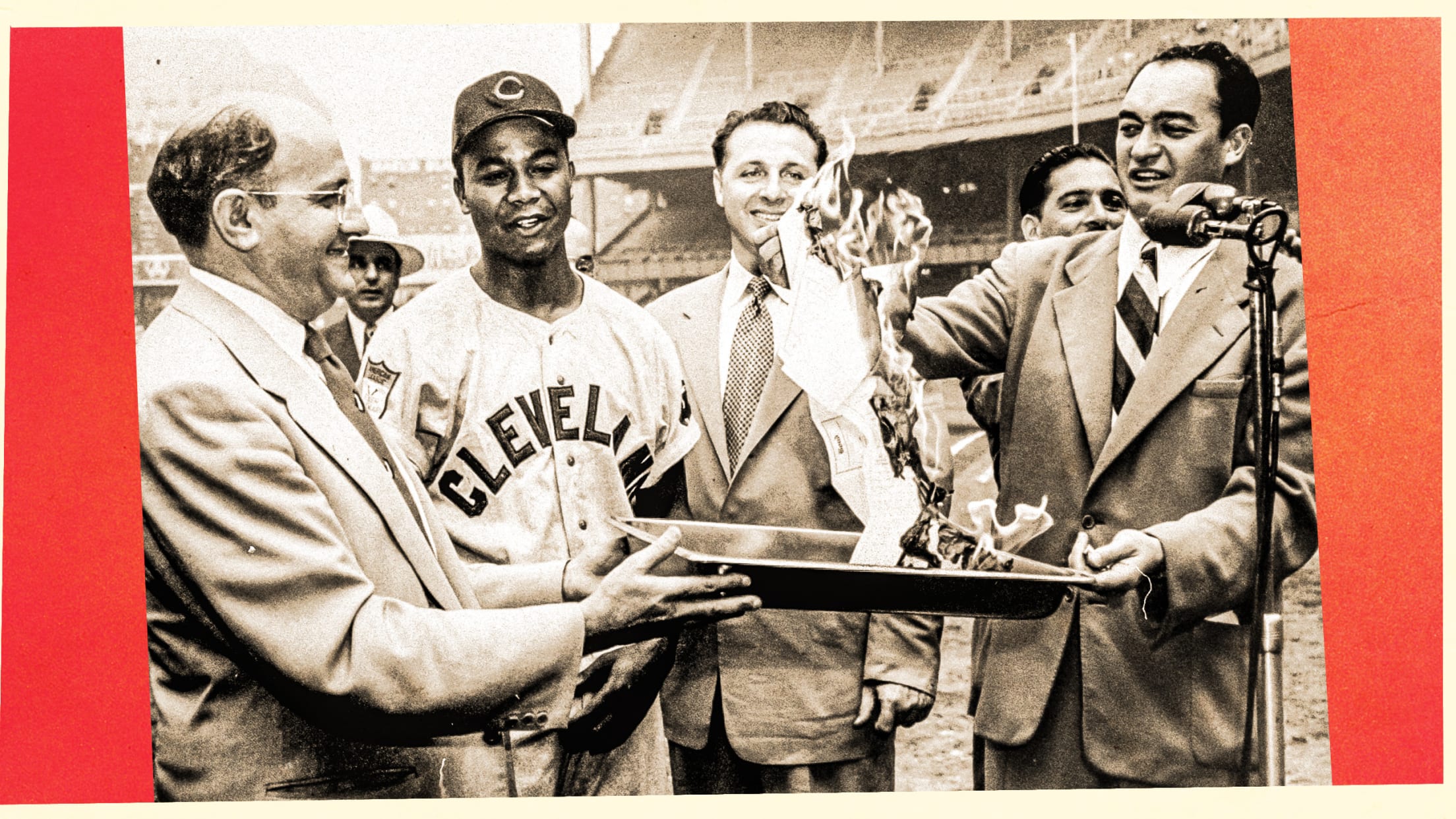
****
The new second baseman on the Newark Eagles amazed people with his polished play. He arrived out of nowhere to bat .400 in the summer of 1942 and was hailed by sportswriters as an “overnight sensation.” Signed by Newark co-owners Abe and Effa Manley for $300, this young man from Los Angeles named Larry Walker clearly possessed the potential to dominate the Negro Leagues for many years.
Except that Larry Walker from Los Angeles wasn’t really Larry Walker from Los Angeles.
He was Larry Doby from Paterson.
Assigned an alias in order to preserve his amateur status, Doby first suited up for Newark before he even graduated high school. The Manleys had been made aware of an exceptional 18-year-old making waves on the baseball circuit, so they gave him a tryout on the down-low and wound up signing him to his first professional contract. (That made him a baseball-playing “Larry Walker” long before the eventual Hall of Famer Larry Walker was born in Canada in 1966.)
It's no surprise that Doby would have attracted the interest of the Newark Eagles, because he had been a marvel in four sports in high school. And he knew what it meant to integrate and infiltrate an all-white playing field long before he reached the American League.
In Paterson and in the other New Jersey industrial towns that were home to Eastside High’s rivals, Doby performed amid many injustices. As the lone Black player on his football team, Doby, a wide receiver, had to keep his cool when opponents piled on him and dug their knees into his back. He didn’t let it deter him. In his senior year, Doby was a prominent piece of Eastside High’s first state championship football team, a basketball star too speedy and creative to be guarded, and an accomplished broad jumper in track, breaking the conference record with a nearly 21-foot jump in his very first meet.
But he was at his absolute best on the baseball diamond. There, Doby ripped line drives, zipped around the basepaths and played every position but pitcher and catcher, all while building upon his local celebrity.
Doby’s status was such that a dinner was held in his honor during his senior year, with speakers reciting speeches and poems about his athletic feats. Doby was feted with a gold wristwatch and dubbed by the school’s coaches “the greatest athlete to ever represent Eastside High School, bar none.” And yet, the only thing clearer than his talent was the systemic limitation placed upon it.
“He’d get four hits in a row or something,” teammate Al Kachadurian once told sportswriter Hank Gola, “and the kids would go home and say, ‘Too bad he’s Black.’ … We felt sorry for him.”
The Negro Leagues were the only place Doby could be paid to play baseball, and the hush-hush stage name he used for parts of two seasons with the Eagles allowed him to keep his college basketball scholarship -- first at Long Island University before transferring to Virginia Union. The arrangement would have lasted longer had Doby not been drafted into the war effort in 1943. He was midway through his second season with the Newark Eagles when he left to travel to the Great Lakes Naval Training Station outside Chicago, where the Black recruits were separated from the white ones.
“This was the first time that segregation really stung me,” Doby later said. “I wasn’t expecting it in the military. I had no idea. It hurt a lot.”
The same segregation existed on military sports teams. Doby played for the Black Bluejackets, a baseball squad of Black sailors. He was not even allowed to try out for the Great Lakes base’s more-heralded, all-white Bluejackets team.
Doby did, however, secure a position as a Navy physical education instructor. One of the “boots” he trained in that role was none other than Marion Motley, who, along with teammate Bill Willis in September 1946, would break professional football’s color barrier with the Cleveland Browns.
Even in the Navy, Doby’s baseball potential was clear. Years later, he would tell the story of Hall of Fame catcher Mickey Cochrane, who coached the white Bluejackets, pulling him aside and telling him, “If I was still managing in the big leagues, I’d want you on my side.” Doby also struck up a friendship with All-Star first baseman Mickey Vernon, who was a member of the white Navy squad and wrote to Washington Senators owner Clark Griffith imploring him to sign Doby.
Alas, Major League clubs were not yet willing to do right by the great Black players of that era. So, when Doby’s time in the Navy ended in the spring of 1946, he returned to the Newark Eagles.
This time, Doby played by his real name.
And in 1947, that name would attract the attention of a certain big league owner.

****
When Bill Veeck was a young man in Chicago in the 1920s and 1930s, he attended home games of the Negro Leagues' Chicago American Giants, as well as the annual East-West All-Star games that were typically held at old Comiskey Park. He was the son of Chicago Cubs president William Veeck, and he grew up in the affluent suburb of Hinsdale. But Bill Veeck’s interest in baseball was colorblind. Talent was talent, and he encountered plenty of it in his taste of Black baseball. He knew the names, the positions and the stats of the Negro Leagues’ best and brightest.
That experience undoubtedly informed what came later. Veeck, who purchased the Cleveland Indians in 1946, was not the first owner to break the color barrier, but he was not far behind, either.
“What offends me about prejudice,” he wrote in “Veeck As in Wreck,” his autobiography, “is that it assumes an unwarranted superiority.”
In that same book, Veeck claimed to have hatched a plan in 1942 to buy the lowly Phillies and stock their roster with Negro League stars, but that Commissioner Kenesaw Mountain Landis intervened and ensured the sale would go instead to lumber baron William D. Cox.
Historians have debated whether or not that particular claim by Veeck is true. But what is undeniable is that Veeck did not support segregation. Earlier in 1942, when he was still the co-owner of the Triple-A Milwaukee Brewers, Veeck had sat in the “colored section” of the bleachers during Spring Training in Ocala, Fla., to chat with fans. When security tried to get Veeck to leave and to respect the segregation ordinance, Veeck refused to back down. And when Ocala’s mayor was summoned to the scene, Veeck threatened to pull his team out of the city for good.
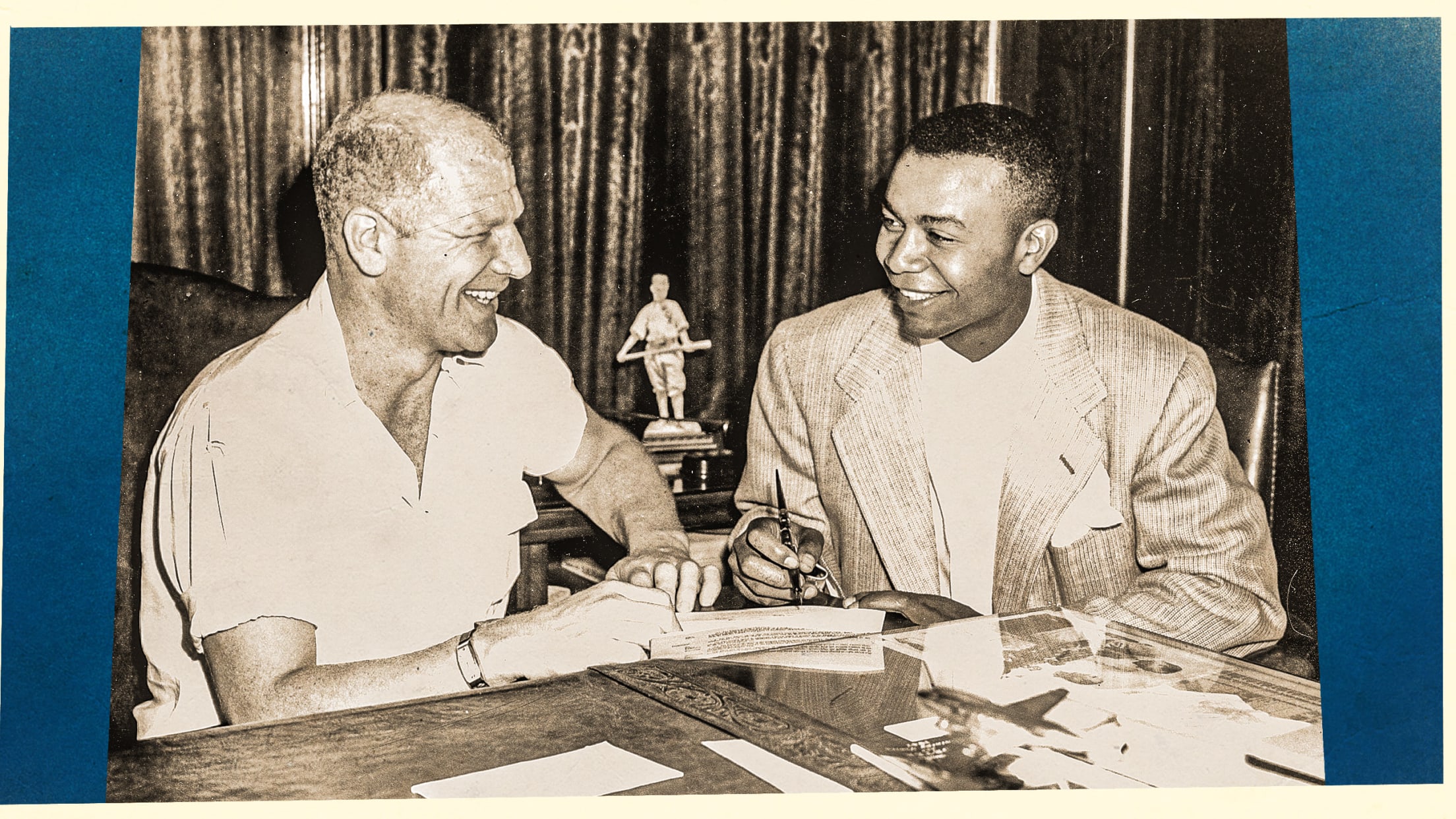
That was Veeck’s way. He was an innovator who pushed back against the status quo. Ordinarily, that attribute is referenced in relation to his many stunts -- the exploding scoreboard or Grandstand Managers Day or sending the 3-foot-7 Eddie Gaedel up to bat. But his approach to the important “innovation” of integration was complicated. Though open to it from the moment he became owner of the Cleveland Indians on June 22, 1946, Veeck progressed, in his own later words, “slowly and carefully, perhaps even timidly” toward actually bringing a Black player aboard.
By the time Veeck took over in Cleveland, Jackie Robinson was two months into his season with the Triple-A Montreal Royals, inching his way toward his seismic introduction to the NL. The Dodgers had also swiped Roy Campanella and Don Newcombe from Negro League rosters and installed them with their Class B Nashua club in New Hampshire.
Meanwhile, Larry Doby was in his “rookie” year (with his prior contributions as “Larry Walker” not formally recognized) with Newark, starring for the Eagles as they stormed their way toward a Negro World Series title. Newark’s games were regularly attended by Clyde Sukeforth, the scout who had signed Robinson for the Dodgers. And Dodgers executive Branch Rickey even turned up at one.
There was no doubt that Doby, who married his wife, Helyn, that same summer, was a focal point.
“I think Larry is the best prospect in baseball,” Eagles owner Effa Manley wrote in a letter that summer, “and can do all the things Jackie Robinson has done.”
That same summer, Veeck expressed to the Black sportswriter Cleveland Jackson that he would only purchase a player from the Negro Leagues if it meant the “difference between a mediocre and a championship team for Cleveland.” And “mediocre” would have been a charitable way to describe a 1946 Cleveland club that went 68-86 and finished sixth in the AL.
In the offseason, though, Veeck set about making the changes that would make Cleveland a winning team. And he became serious about integration. In January 1947, he hired Bill Killefer, a former player and longtime coach, to scout the Negro Leagues. Around that same time, he hired a Black man named Louis Jones -- a promoter and the first husband of singer and actress Lena Horne -- as the team’s assistant director of public relations. Jones, therefore, became the first Black executive in MLB, tasked with engaging with the city’s Black civic leaders and neighborhoods in preparation for the desegregation of the team.
Cleveland was a sensible place to have a Black player in the big leagues. It had been the home of Jesse Owens, the home of a championship Negro League franchise (the Cleveland Buckeyes won the World Series in 1945) and the home of the integrated Browns, with the aforementioned Marion Motley and Bill Willis, in the All-America Football Conference. Add in a motivated owner in Veeck, and it was not really a matter of when or if, but who.
Doby proved to be the answer.
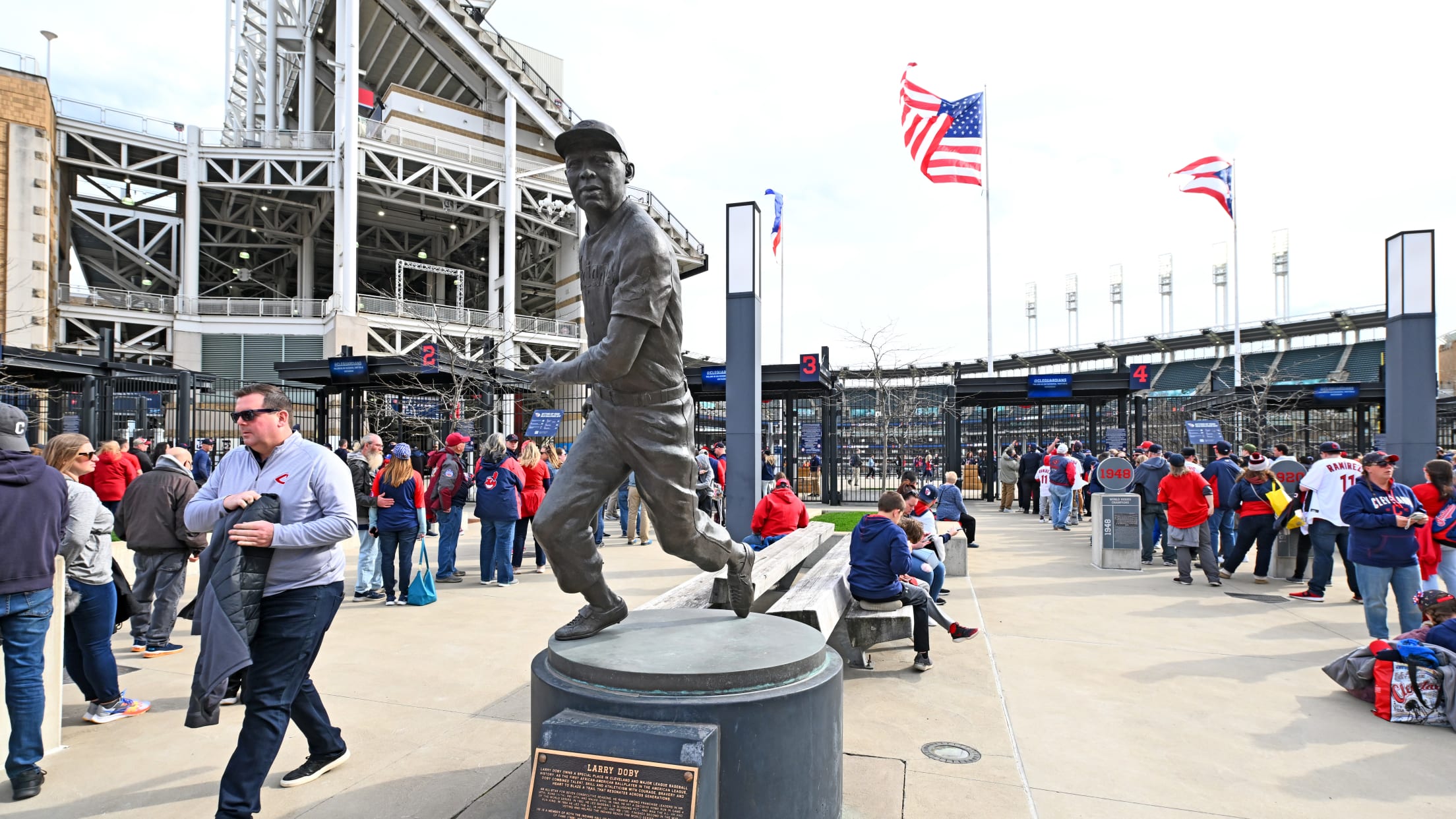
****
Having already asserted himself in the Eagles’ championship run the previous year, Doby continued to build on his profile with a terrific start to the 1947 season. Sukeforth, the Dodgers scout, felt Doby would need a couple of years in the Minors before he was ready for the big leagues. But Killefer filed a much more direct scouting report.
“[Doby] can play in this league,” the report read. “I don’t know whether he belongs in the infield or the outfield, but he can play.”
Veeck also had at his disposal the report of Louis Jones, who had looked into Doby off the field and concluded he had the character to handle such a move. Jones noted that Doby did not drink, swear or smoke.
There's nothing down there I can't do.
Larry Doby
Doby had his own “scouting report” of his abilities. When Jones visited him in June of 1947 and took him to a game between the Yankees and Cleveland at Yankee Stadium, Jones asked Doby if he felt he could hold his own against the players they were watching on the field below.
“There’s nothing down there I can’t do,” Doby told him.
Veeck was willing to let Doby try. He felt the long process by which Robinson went from signing with the Dodgers in the fall of 1945 to actually playing for them in 1947 was unfair to Robinson, in that it only added to the pressure placed upon him. Furthermore, he did not want to subject Doby to playing at the club’s Double-A affiliate in Oklahoma City or its Triple-A team in Baltimore, two cities where a Black player might face particularly strong vitriol.
And anyway, Veeck wanted to win. He felt Doby could help him do just that.
The call from Bill Veeck to Effa Manley was made on July 1, 1947. Unlike Rickey and the Dodgers, who pilfered Black players from their Negro League rosters without compensating the club owners, Veeck honored the validity of Negro League pacts and made Manley an offer of $10,000, with an additional $5,000 if he stayed with the team for more than a month.
Unbeknownst to Doby that day, the Manleys accepted Veeck’s offer. But soon, rumors of the deal began to develop. The following day, July 2, reporters from the Black newspapers approached Doby after the Eagles’ victory over the Philadelphia Stars in a game played in Wilmington and asked him if those rumors were true.
“It may be,” Doby said, “but I don’t know until I get back to Newark.”
Back in New Jersey, however, the news was already coming out. An inquisitive reporter named Bob Whiting at Paterson’s Morning Call had followed up on his hunch that Cleveland was close to signing Doby and gotten confirmation of the deal. The news was rolling off the printing press as the Eagles’ bus rolled back to the Garden State.
That scoop by Whiting accelerated what would have already been a rapid jump to the big leagues for Doby. Had Veeck’s original plan played out, Doby would have at least had a few days to absorb this dizzying development before suiting up for his new team. The MLB All-Star break was approaching, and Veeck wanted Doby to debut in Cleveland on July 10, in the first game of the second half.
Now, however, the Doby plan was put in fast-forward. Manley called Doby with the official news at 7 a.m. on Thursday, and Doby was available off the Cleveland bench just over 48 hours later.
In between, though, Doby went out with a bang in Newark. On the afternoon of July 4, the Eagles played a doubleheader at home. Prior to the first game, they put together an impromptu ceremony saluting Doby and sending him off with modest but meaningful gifts -- a shaving kit, a travel case and a check for $50. Doby, true to form, walloped a home run in the sixth inning of the first game, which was a win for the Eagles. Rather than stick around for the second, he showered, changed and rushed to catch the overnight Pennsylvania Railroad train to Chicago at Newark’s Penn Station.
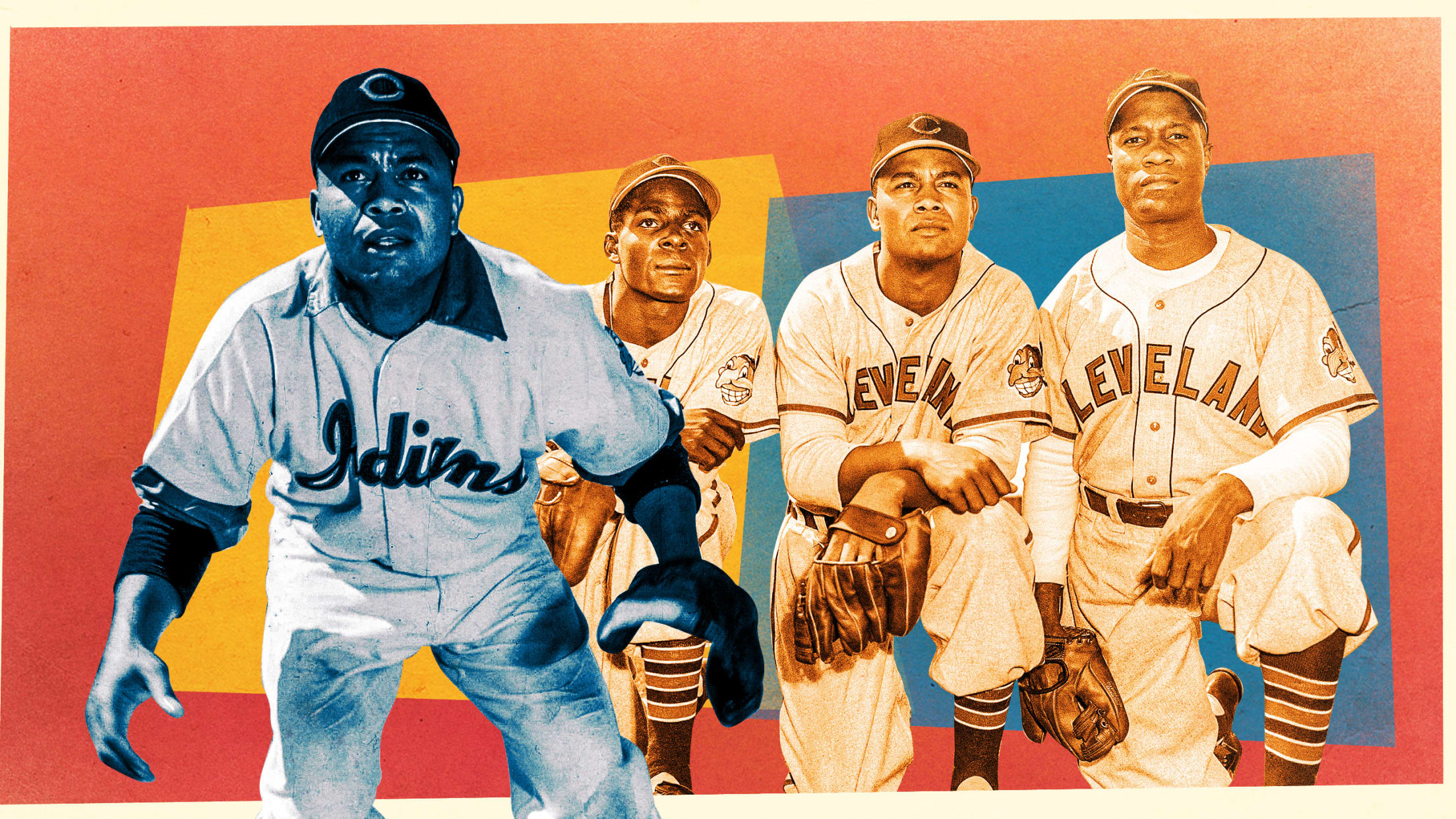
This was Larry Doby’s mad dash into the history books. At some point in the whirlwind, the then-23-year-old remarked to the Associated Press that he didn’t know whether he was “more surprised than excited or more excited than surprised.” Privately, on the train, he confessed nerves to his Helyn, remarking that he felt like he was venturing into “a new and strange world.”
Doby entered that world around 10:45 a.m. on July 5, when his train arrived at Chicago’s Union Station. Escorted by Jones, Doby got in a taxicab that then picked up Veeck at the Congress Hotel. (Doby himself would have to stay not at the team hotel but at the DuSable Hotel, a predominantly Black lodging on the city’s South Side.)
“Lawrence, I’m Bill Veeck,” the owner introduced himself in the cab.
“Nice to meet you, Mr. Veeck,” Doby replied.
“You don’t have to call me Mr. Veeck. Call me Bill.”
Thus began an earnest friendship that would last for the remainder of the lives of both men. Just as Rickey had done for Robinson, Veeck laid out the ground rules Doby would have to follow to remain in the Majors. Doby would have to refrain from arguing with umpires or fighting with opposing players, and he would have to endure whatever awful barbs came his way with patience and with calm.
Doby was whisked directly to a press conference at Comiskey, where he signed his official contract and responded to questions from reporters in a hushed and nervous tone.
“Just remember,” Veeck told him within earshot of the scribes, “they play with a little white ball and a stick of wood up here just like they did in your league.”
But the difference between the respect Doby commanded in Newark and the cold shoulder he received from some in the Cleveland clubhouse -- to say nothing of opponents -- just 24 hours later could not have been more stark.
You are now a big leaguer.
Cleveland manager Lou Boudreau to Doby after his first at-bat
After the press conference was over, Doby was guided to his locker, where he donned the Cleveland uniform for the first time. Manager Lou Boudreau led him around the quiet room and introduced him to each of his new teammates, some of whom greeted him less-than-enthusiastically, with limp handshakes or a lack of eye contact. In Doby’s telling, two teammates -- first basemen Les Fleming and Eddie Robinson, both of whom were in danger of losing playing time to Doby -- turned their back to him completely. (Robinson would insist in his later years that his frosty treatment of Doby was because of the playing-time aspect and not race.)
When the Cleveland players trotted out to the diamond for pregame warmups, Doby found himself without a catch partner. He stood outside the dugout, humiliated, for mere minutes that felt like an eternity. In that moment, those feelings of loneliness that had pervaded Doby’s youth sprouted up again. But when, at long last, All-Star second baseman Joe Gordon tossed him a ball, Doby encountered his first player ally in his integration.
That afternoon, Cleveland trailed, 5-1, entering the seventh inning, when Doby was summoned with one out and two aboard to pinch-hit for pitcher Bryan Stephens. A crowd of mixed race cheered his arrival to the plate as he nervously dug in.
“I didn’t hear a sound,” he later recalled. “It was like I was dreaming.”
Doby swung and missed at White Sox pitcher Earl Harrist’s first offering, then fouled off the next. He let the next two pitches pass for balls but swung through the fifth pitch to go down with the K.
“Well,” Boudreau told him upon his return to the dugout, “now you know some of what it is all about. You are now a big leaguer.”
The strikeout was emblematic of Doby’s first partial season in the AL. He appeared in 29 games, made 33 trips to the plate and hit just .156 (5-for-32). Consider the whirlwind, the circumstances and the hate that he, like Robinson, faced (“Nobody said, ‘We’re gonna be nice to the second Black,’” Doby once said), and those early struggles in a part-time role are understandable. The night of his big league debut, Doby was the only member of the Cleveland club staying at the DuSable. He had no teammates to confide in or compare notes with. Doby was alone yet again.
But he had been raised to endure tough times and harsh changes. Just as Doby didn’t let his odd upbringing lead him down the wrong path, he didn’t let the strikeouts, the segregated hotels, the “whites only” taxicabs, the insults, the slurs or the time he was spat on while sliding into second base deter him from his dreams.
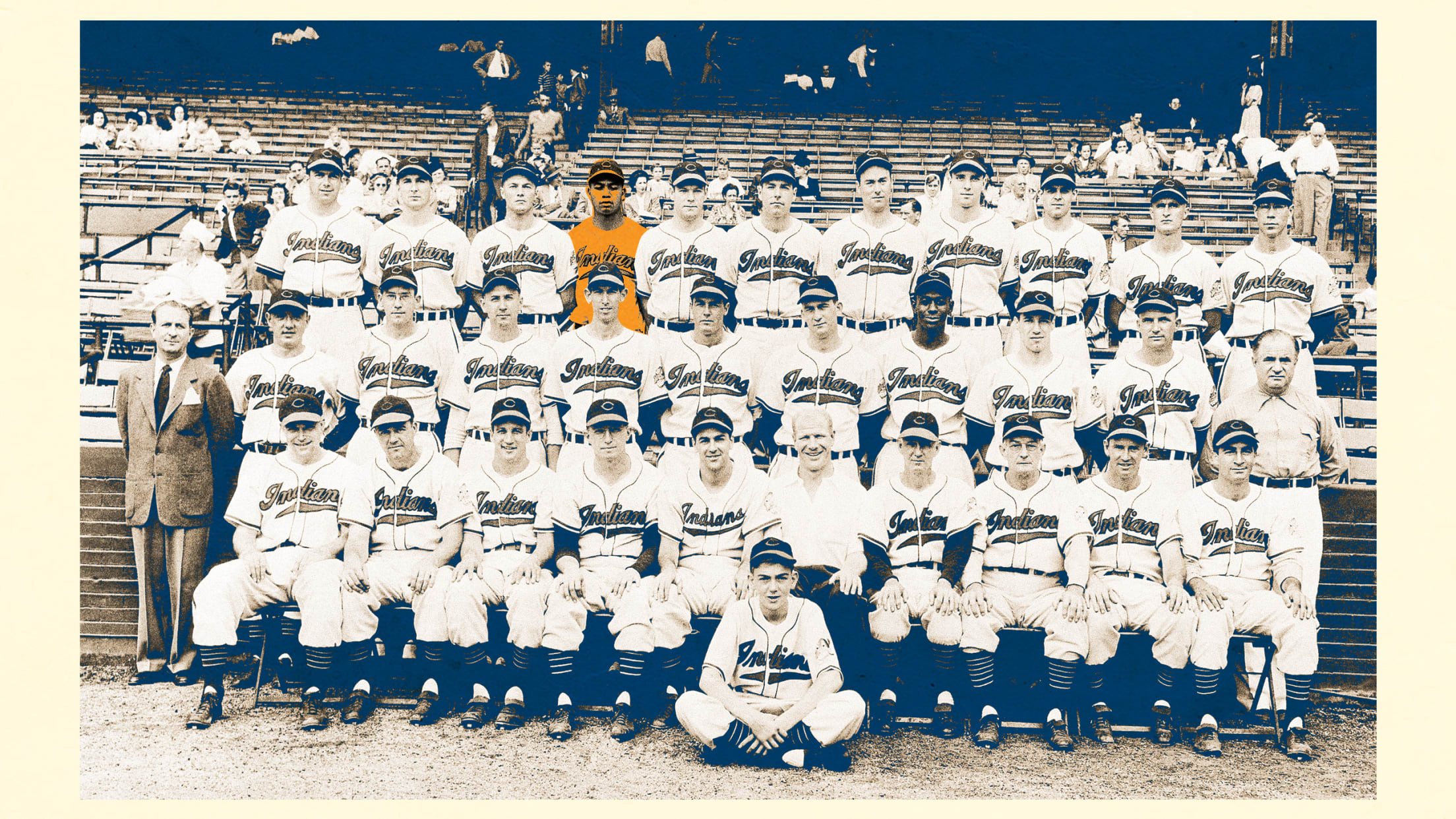
In 1948, Doby, blocked at second by Gordon, was tasked by Veeck with moving to center field in order to carve out a regular spot in the lineup. The position change only added to the 24-year-old’s full plate. But the versatility that served Doby well as a four-sport athlete in high school also served him well in the move to the outfield. His bat caught on that year, too. With the help of Doby’s .301 average, 14 homers, 23 doubles and nine triples, Cleveland captured its first AL pennant in 28 years. And Doby’s 7-for-22 showing in the World Series against the Boston Braves -- including what turned out to be the game-winning home run in Game 4 -- was instrumental in claiming what still stands as the franchise’s most recent championship crown.
From that point on, there was never again a doubt as to whether Doby could make it in the Majors.
He was selected to the AL All-Star team every year from 1949-55 and finished in the top 10 of the MVP voting in 1950 and 1954. After his playing career, he became a scout and a coach before Veeck, who by this point was owner of the White Sox, called upon him again in 1978 by making him MLB’s second Black manager, behind Cleveland’s Frank Robinson three years earlier. As was the case in his AL debut, Doby was thrust into that duty in the middle of the season.
To be second, Doby learned, is to be generally underappreciated. He went 39 years between his final game as a player in 1959 and his rightful induction into the National Baseball Hall of Fame in 1998 -- an honor that came just five years before his death from cancer at age 79.
Doby, though, set a template that not even Robinson could claim, for he was the first Negro Leaguer to jump directly into the big leagues. Imagine being cheered lustily one day at a ceremony in your honor and then having a teammate deny you a handshake the very next.
For his part, Doby was glad to have had so little time to prepare for the “new and strange world” he penetrated.
“I look at myself as more fortunate than Jack,” he once said of Robinson, with whom he became close. “If I had gone through hell in the Minors, then I’d have to go through it again in the Majors. Once was enough!”
There was only one Lawrence Eugene Doby. No, he was not MLB’s first Black player. No, he does not have a day in which the entire league wears his No. 14, as they do for Jackie and his No. 42 each April. No, he is not the subject of dozens of books or a feature film. And no, he was not saluted as a first-ballot Hall of Famer.
But this much must be said and understood about the man whose legacy is too often neglected: The call came, rousing him from sleep and inviting him to do something that had never been done. And to the benefit of the many who followed in his footsteps, Doby answered.
